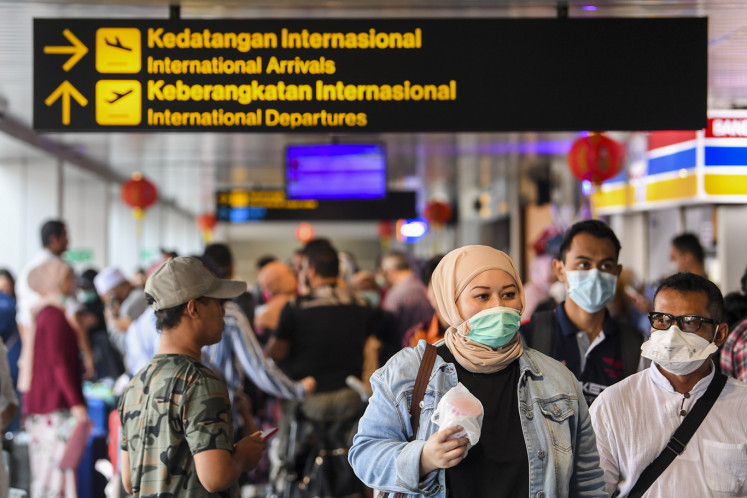Popular Reads
Top Results
Can't find what you're looking for?
View all search resultsPopular Reads
Top Results
Can't find what you're looking for?
View all search resultsWomen's financial literacy key to post-pandemic economic recovery
Women have proven their resilience in running businesses and managing household finances as the primary breadwinner during the pandemic, and with added support to increase their financial literacy, they will be the key to economic recovery after the pandemic.
Change text size
Gift Premium Articles
to Anyone
T
he 2020 World Economic Forum stated that women's empowerment was the key to increasing national income. The 2018 McKinsey Global Institute Analysis also stated that Indonesia could earn a gross domestic product of US$135 billion per year in 2025, with the prerequisite that more women participated in economic activities.
Unfortunately, female labor force participation in the formal sector in 2021 was still 53.3 percent, lower than the 67.7 percent average in East Asia and the Pacific. The formal sector has great potential in absorbing female workers, considering the high proportion of women of productive age, as much as 68.52 percent.
However, the need to increase the rate of women's economic participation in the formal sector has yet to be matched by the quality of its human resources. Nearly two out of 10 women aged 15 years and above in Indonesia do not have a diploma or its equivalent, and most women (64.12 percent) have primary school education and below (Statistics Indonesia/BPS, 2021).
Developing Indonesia’s women human resources is no less important than men. According to 2020 BPS data, women make up as much as 49.42 percent of the population. At the same time, 13.91 percent of women act as heads of households and 31.60 percent are single, which is significantly more than single male heads of households (3.53 percent).
This means that women need education. Educated women can make decisions, increase household income in the long run, and play a significant role in supporting national economic recovery. In addition, higher education certification can increase the opportunities for women to find a job with a steady income in the formal sector.
Women have become the backbone of the national economy, especially during the pandemic. The number of male employees who were laid off have made women the primary breadwinners. According to 2021 BPS data, women's contributions to household income had increased compared to the previous year. In fact, for the regencies of Nias, Karo, Humbang Hasundutan, Samosir, West Nias (North Sumatra), Gunung Mas (West Kalimantan) and South Manokwari (West Papua), women were the primary contributors to the household economy, contributing more than 50 percent of income.
In line with this, data from the Financial Services Authority (OJK) in 2021 showed that women owned 53 percent of micro, small and medium enterprises (MSMEs) in Indonesia, which contributed 61 percent of GDP. In addition, women make up 21 percent of entrepreneurs, higher than the global figure of only 8 percent.
















